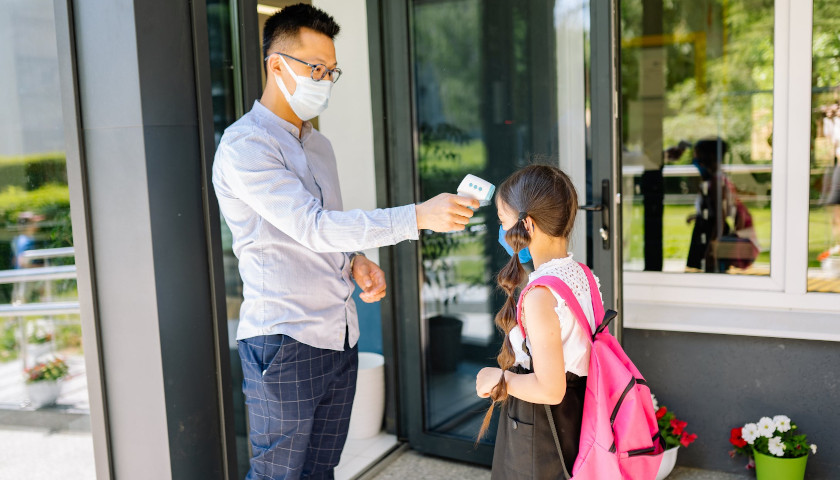The Centers for Disease Control and Prevention (CDC) has recommended that all schools require mask-wearing indoors by teachers and students, vaccinated or unvaccinated against COVID-19.
And many school districts are adopting that requirement, to the dismay of many parents. But how well do masks protect children?
For starters, data gathered throughout the pandemic indicate that the chances of a child experiencing serious illness as a result of the novel coronavirus are extremely low. The CDC’s own numbers show a higher death rate for American kids and teenagers from influenza during the “moderately severe” 2018-19 flu season than from COVID. That same institution reports that one out of every 1,738 deaths resulting from the virus since the onset of the pandemic was a child or teenage fatality.
Still, there has been a rise in COVID infections among children. From July 29th through August 5th, 93,824 child COVID-19 cases were reported in the U.S. That’s up from 71,726 new child and teen infections during the prior week. And 38,654 were reported the week prior to that.
But according to statistician Jeffrey H. Anderson, the evidence that masks will provide much protection even to populations that are particularly vulnerable to COVID is slim. The problem, he writes in a review of relevant research in the Manhattan Institute’s City Journal, is that governmental organizations like the CDC and the World Health Organization have relied too little on randomized controlled trials (RCTs). In such tests, subjects are selected on a random basis to mask or not mask, and the rates of infection can be objectively compared between the two.
“It’s striking how much the CDC, in marshaling evidence to justify its revised mask guidance, studiously avoids mentioning randomized controlled trials,” Anderson observes.
Two RCTs to date have specifically tested the effectiveness of masking in preventing those around the mask wearer from getting a respiratory infection. One, conducted in Beijing in 2016, didn’t produce results that Anderson found very illuminating, as only two individuals in the entire study — one masked and the other unmasked — developed a flu-like infection. A French study conducted in 2010, however, found about 16 percent of individuals in the experiment who were selected to mask contracted flu-like illnesses and about 16 percent who were selected to go unmasked also contracted them. Other RTCs similarly showed masking made little to no difference.
Only one RCT to date has tested mask-wearing’s utility for the mask wearer against COVID-19. This Danish study, involving 4,862 participants last year, found that 1.8 percent of those wearing masks and 2.1 percent of those not wearing masks became infected with the coronavirus — i.e., a very slim difference.
Anderson’s examination of the results of all 14 RTCs conducted to date that have investigated the usefulness of masks in protecting against respiratory ailments concludes that eleven of those studies indicate masks are either “useless … or actually counterproductive.”
– – –
Bradley Vasoli is a reporter at The Michigan Star and The Star News Network. Follow Brad on Twitter at @BVasoli. Email tips to [email protected].





